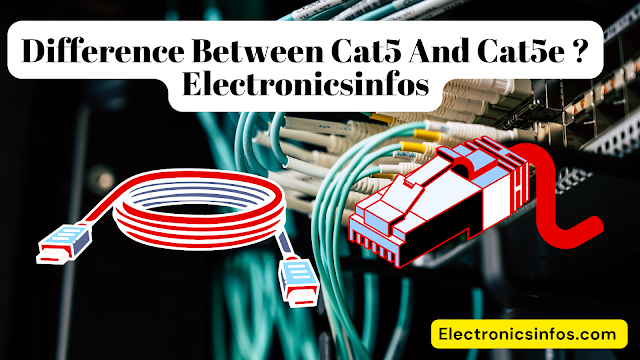What is Cat5 Cable?
Advantages of Cat5 cable
Here are some advantages of Cat 5 cables
- Cost-Effectiveness
- Backward Compatibility
- Basic Networking Needs
- Simple Installation
- Reliability for Older Standards
- Minimal Interference in Short Distances
- Existing Infrastructure
Cost-Effectiveness
Cat 5 cables are generally less expensive than newer cable categories, making them a budget-friendly choice for basic networking needs.
Backward Compatibility
Cat 5 cables are backwards compatible with older cable standards like Cat 3. This means you can use Cat 5 cables to replace older cables without having to upgrade the entire network infrastructure.
Basic Networking Needs
Cat 5 cables are suitable for basic networking tasks, such as connecting computers, printers, and routers in small-scale setups where Gigabit Ethernet is not required.
Simple Installation
The widespread availability and familiarity with Cat 5 cables make them easy to find and use for simple networking setups.
Reliability for Older Standards
If you have older networking equipment that supports only Fast Ethernet (100 Mbps) or slower speeds, Cat 5 cables can still provide reliable connectivity.
Minimal Interference in Short Distances
Cat 5 cables can provide adequate performance and signal quality for short distances and simple setups with minimal interference.
Existing Infrastructure
If you have an existing Cat 5 network, you can continue using Cat 5 cables without an immediate need to upgrade if your networking needs are modest and you don't require Gigabit Ethernet speeds.
What is Cat5E Cable?
Cat 5e, also known as Category 5e or Cat 5 Enhanced, is an improved version of the Cat 5 cable standard. It was developed to address some of the limitations of the original Cat 5 cable.
it provides better performance and reliability for Ethernet networking. Cat 5e cables are commonly used for both residential and commercial networking installations.
Advnatages of Cat 5e Cable
Cat 5e (Category 5e) cables offer several advantages over their predecessor, Cat 5 (Category 5) cables, making them a more suitable choice for modern networking needs. Here are some of the key advantages of Cat 5e cables
- Higher Data Transfer Rates
- Gigabit Ethernet Support
- Enhanced Signal Quality
- Reduced Crosstalk
- Backward Compatibility
- Future-Proofing
- Suitable for Various Environments
- Cost-Effective Solution
- Compatibility with Ethernet Devices
Higher Data Transfer Rates
Cat 5e cables support data transfer rates of up to 1 Gbps (Gigabit per second), which is ten times faster than the maximum speed of Cat 5 cables (100 Mbps). This higher data rate enables faster file transfers, smoother multimedia streaming, and improved overall network performance.
5 Best Outdoor Surge Protectors
Gigabit Ethernet Support
Cat 5e cables are capable of supporting Gigabit Ethernet (1000BASE-T) networks, providing compatibility with modern networking standards. This is especially important for businesses and homes that require higher bandwidth for data-intensive applications.
Enhanced Signal Quality
Cat 5e cables have stricter specifications for signal quality, reducing the chances of signal degradation and improving data integrity. This results in more reliable and stable network connections.
Reduced Crosstalk
Cat 5e cables are designed with improved insulation and tighter twists in the wire pairs, leading to reduced crosstalk between adjacent wires. This means less interference and a lower chance of data corruption due to signal interference.
Backward Compatibility
Cat 5e cables are backwards compatible with Cat 5 and Cat 3 cables, allowing them to be used in existing networks without sacrificing their enhanced performance characteristics. This makes upgrading networks easier and more cost-effective.
12 Applications of Ultrasonics waves
Future-Proofing
Cat 5e cables provide a level of future-proofing, as they offer support for higher data rates and modern networking standards. While they might not be the latest standard available, they still provide ample performance for most current applications.
Suitable for Various Environments
Cat 5e cables are suitable for a wide range of environments, from home networks to small businesses and office setups. They strike a good balance between performance and cost-effectiveness.
Cost-Effective Solution
Compared to higher-tier cable categories like Cat 6 and Cat 6a, Cat 5e cables are generally more affordable while still offering significantly improved performance over Cat 5 cables.



-Electronicsinfos.png)

.png)

0 Comments
please do not insert spam links